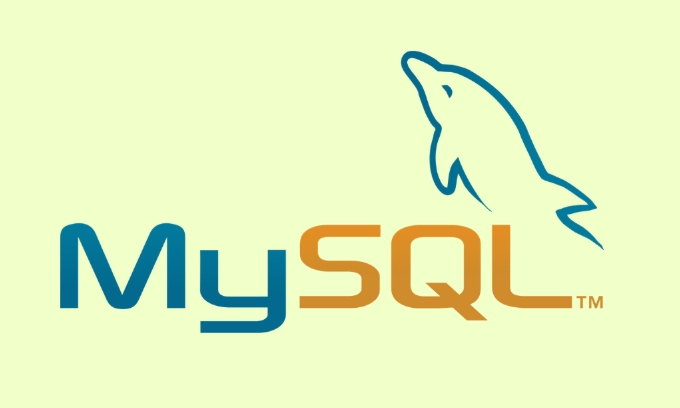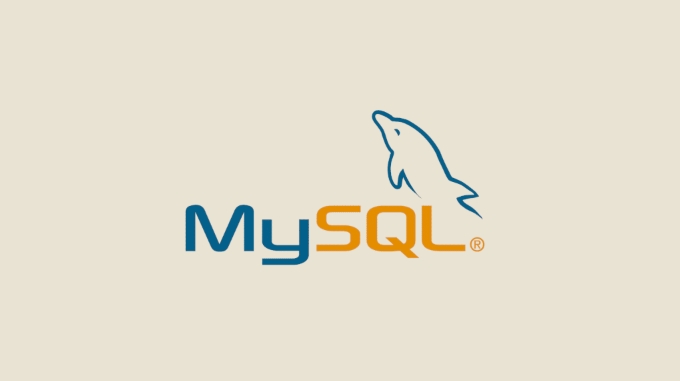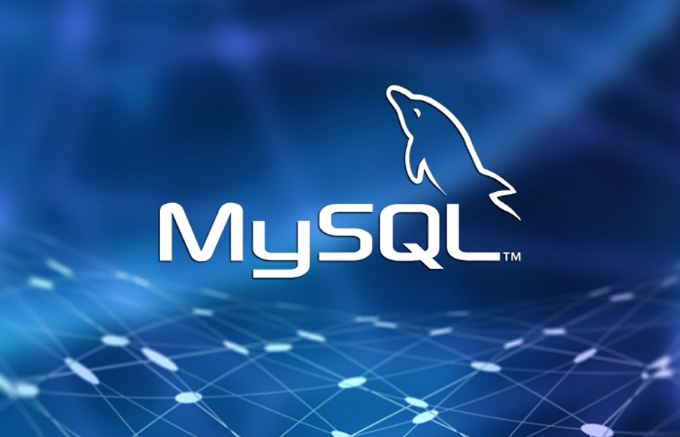Selecting the Optimal Storage Engine for MySQL Tables
Jul 05, 2025 am 01:28 AMInnoDB is suitable for scenarios that require transactions, concurrent writes and crash recovery, such as e-commerce platforms or banking systems; MyISAM is suitable for static tables that require more reads, writes less, and does not require transactions, such as log systems; other engines such as Memory and Archive are suitable for specific purposes. When choosing, you should decide based on workload and data requirements, and in most cases, InnoDB is recommended.

Choosing the right storage engine for MySQL tables is cruel because it affects performance, reliability, and features. The two most commonly used engines are InnoDB and MyISAM — each has its strengths and weaknesses depending on your use case. Here's how to decide which one fits best.

InnoDB vs. MyISAM: Key Differences
Understanding the main differences helps in making an informed decision:

- Transactions : InnoDB supports ACID-compliant transactions, while MyISAM does not.
- Locking : InnoDB uses row-level locking, allowing multiple users to write concurrently. MyISAM only supports table-level locking.
- Crash Recovery : InnoDB offers automatic crash recovery, whereas MyISAM may require manual repair after a crash.
- Full-text Search : Both support full-text indexes from MySQL 5.6 onward, so that's no longer a differentiator.
If you need reliability and concurrent writes, InnoDB is usually the better choice.
When to Use InnoDB
InnoDB should be your default choice for most modern applications, especially if:

- Your application involves frequent INSERTs, UPDATEs, and DELETEs
- You need transaction support for operations like financial records or order processing
- You want row-level locking to avoid blocking other users during writes
- Crash recovery is important for data integrity
For example, e-commerce platforms or banking systems benefit greatly from InnoDB's transactional capabilities and reliability.
When MyISAM Still Makes Sense
Although being less robust than InnoDB, MyISAM can still be useful in specific scenarios:
- Read-heavy environments with minimal updates (eg, logging systems or data warehouse)
- Applications that don't require transactions or foreign keys
- Tables that are mostly static and need fast reads
However, even in these cases, consider whether the simplicity of MyISAM outweights the risks of potential corruption and lack of crash recovery.
Other Storage Engines Worth Mentioning
MySQL also includes several niche storage engines:
- Memory : Stores data in RAM for fast access, good for temporary lookup tables
- Archive : Optimized for storing large amounts of data without indexes
- CSV : Stores data in CSV files, useful for data exchange but limited in functionality
- Blackhole : Accepts data but stores nothing — often used for replication testing
These are specialized and shouldn't be used as general-purpose replacements for InnoDB or MyISAM.
How to Check or Change the Storage Engine
To check the current engine of a table:
SHOW CREATE TABLE your_table_name;
To change the engine:
ALTER TABLE your_table_name ENGINE = InnoDB;
(or replace InnoDB with another engine)
Make sure to back up your data before converting, especially when switching between engines with different feature sets.
Basically that's it. Choosing the optimal storage engine isn't complicated, but it requires understanding your workload and data needs. Most of the time, sticking with InnoDB is safe — especially if you're unsure.
The above is the detailed content of Selecting the Optimal Storage Engine for MySQL Tables. For more information, please follow other related articles on the PHP Chinese website!

Hot AI Tools

Undress AI Tool
Undress images for free

Undresser.AI Undress
AI-powered app for creating realistic nude photos

AI Clothes Remover
Online AI tool for removing clothes from photos.

Clothoff.io
AI clothes remover

Video Face Swap
Swap faces in any video effortlessly with our completely free AI face swap tool!

Hot Article

Hot Tools

Notepad++7.3.1
Easy-to-use and free code editor

SublimeText3 Chinese version
Chinese version, very easy to use

Zend Studio 13.0.1
Powerful PHP integrated development environment

Dreamweaver CS6
Visual web development tools

SublimeText3 Mac version
God-level code editing software (SublimeText3)

Hot Topics
 How to add the MySQL bin directory to the system PATH
Jul 01, 2025 am 01:39 AM
How to add the MySQL bin directory to the system PATH
Jul 01, 2025 am 01:39 AM
To add MySQL's bin directory to the system PATH, it needs to be configured according to the different operating systems. 1. Windows system: Find the bin folder in the MySQL installation directory (the default path is usually C:\ProgramFiles\MySQL\MySQLServerX.X\bin), right-click "This Computer" → "Properties" → "Advanced System Settings" → "Environment Variables", select Path in "System Variables" and edit it, add the MySQLbin path, save it and restart the command prompt and enter mysql--version verification; 2.macOS and Linux systems: Bash users edit ~/.bashrc or ~/.bash_
 How to install MySQL on Windows 11
Jun 29, 2025 am 01:47 AM
How to install MySQL on Windows 11
Jun 29, 2025 am 01:47 AM
The key steps for installing MySQL on Windows 11 are as follows: 1. Download the correct version, select the Windows MSI installation package and ensure that the system is 64-bit; 2. Select the "Custom" mode during installation, add MySQLServer and set the appropriate installation path; 3. Run the configuration wizard, select the "ServerComputer" configuration type, set the root password, and select the automatic startup method; 4. After the test installation is successful, if the prompt command is unavailable, add the MySQL bin directory to the system PATH environment variable. Follow these steps to complete the installation and configuration smoothly.
 Resetting the root password for MySQL server
Jul 03, 2025 am 02:32 AM
Resetting the root password for MySQL server
Jul 03, 2025 am 02:32 AM
To reset the root password of MySQL, please follow the following steps: 1. Stop the MySQL server, use sudosystemctlstopmysql or sudosystemctlstopmysqld; 2. Start MySQL in --skip-grant-tables mode, execute sudomysqld-skip-grant-tables&; 3. Log in to MySQL and execute the corresponding SQL command to modify the password according to the version, such as FLUSHPRIVILEGES;ALTERUSER'root'@'localhost'IDENTIFIEDBY'your_new
 Handling NULL Values in MySQL Columns and Queries
Jul 05, 2025 am 02:46 AM
Handling NULL Values in MySQL Columns and Queries
Jul 05, 2025 am 02:46 AM
When handling NULL values ??in MySQL, please note: 1. When designing the table, the key fields are set to NOTNULL, and optional fields are allowed NULL; 2. ISNULL or ISNOTNULL must be used with = or !=; 3. IFNULL or COALESCE functions can be used to replace the display default values; 4. Be cautious when using NULL values ??directly when inserting or updating, and pay attention to the data source and ORM framework processing methods. NULL represents an unknown value and does not equal any value, including itself. Therefore, be careful when querying, counting, and connecting tables to avoid missing data or logical errors. Rational use of functions and constraints can effectively reduce interference caused by NULL.
 Troubleshooting MySQL installation errors on Windows
Jun 27, 2025 am 01:22 AM
Troubleshooting MySQL installation errors on Windows
Jun 27, 2025 am 01:22 AM
Common problems with installing MySQL on Windows include the service cannot be started, the port is occupied or the configuration failed. The solutions are as follows: 1. When encountering "MySQL80 service cannot be started", you should stop and delete the old service, clean up residual data, or use the "Remove" function that comes with the installer; 2. If an error is reported as "Error:1053" when starting the service, you need to check the log to confirm the port conflict and modify the port number in my.ini; 3. When the configuration wizard prompts "Service not responding", check and end the unresponsive mysqld.exe process, or manually run mysqld--console to view the output; 4. If the connection to the database is denied, you can use the password-free login method to reset the root user password.
 Analyzing the MySQL Slow Query Log to Find Performance Bottlenecks
Jul 04, 2025 am 02:46 AM
Analyzing the MySQL Slow Query Log to Find Performance Bottlenecks
Jul 04, 2025 am 02:46 AM
Turn on MySQL slow query logs and analyze locationable performance issues. 1. Edit the configuration file or dynamically set slow_query_log and long_query_time; 2. The log contains key fields such as Query_time, Lock_time, Rows_examined to assist in judging efficiency bottlenecks; 3. Use mysqldumpslow or pt-query-digest tools to efficiently analyze logs; 4. Optimization suggestions include adding indexes, avoiding SELECT*, splitting complex queries, etc. For example, adding an index to user_id can significantly reduce the number of scanned rows and improve query efficiency.
 Performing logical backups using mysqldump in MySQL
Jul 06, 2025 am 02:55 AM
Performing logical backups using mysqldump in MySQL
Jul 06, 2025 am 02:55 AM
mysqldump is a common tool for performing logical backups of MySQL databases. It generates SQL files containing CREATE and INSERT statements to rebuild the database. 1. It does not back up the original file, but converts the database structure and content into portable SQL commands; 2. It is suitable for small databases or selective recovery, and is not suitable for fast recovery of TB-level data; 3. Common options include --single-transaction, --databases, --all-databases, --routines, etc.; 4. Use mysql command to import during recovery, and can turn off foreign key checks to improve speed; 5. It is recommended to test backup regularly, use compression, and automatic adjustment.
 Establishing secure remote connections to a MySQL server
Jul 04, 2025 am 01:44 AM
Establishing secure remote connections to a MySQL server
Jul 04, 2025 am 01:44 AM
TosecurelyconnecttoaremoteMySQLserver,useSSHtunneling,configureMySQLforremoteaccess,setfirewallrules,andconsiderSSLencryption.First,establishanSSHtunnelwithssh-L3307:localhost:3306user@remote-server-Nandconnectviamysql-h127.0.0.1-P3307.Second,editMyS






